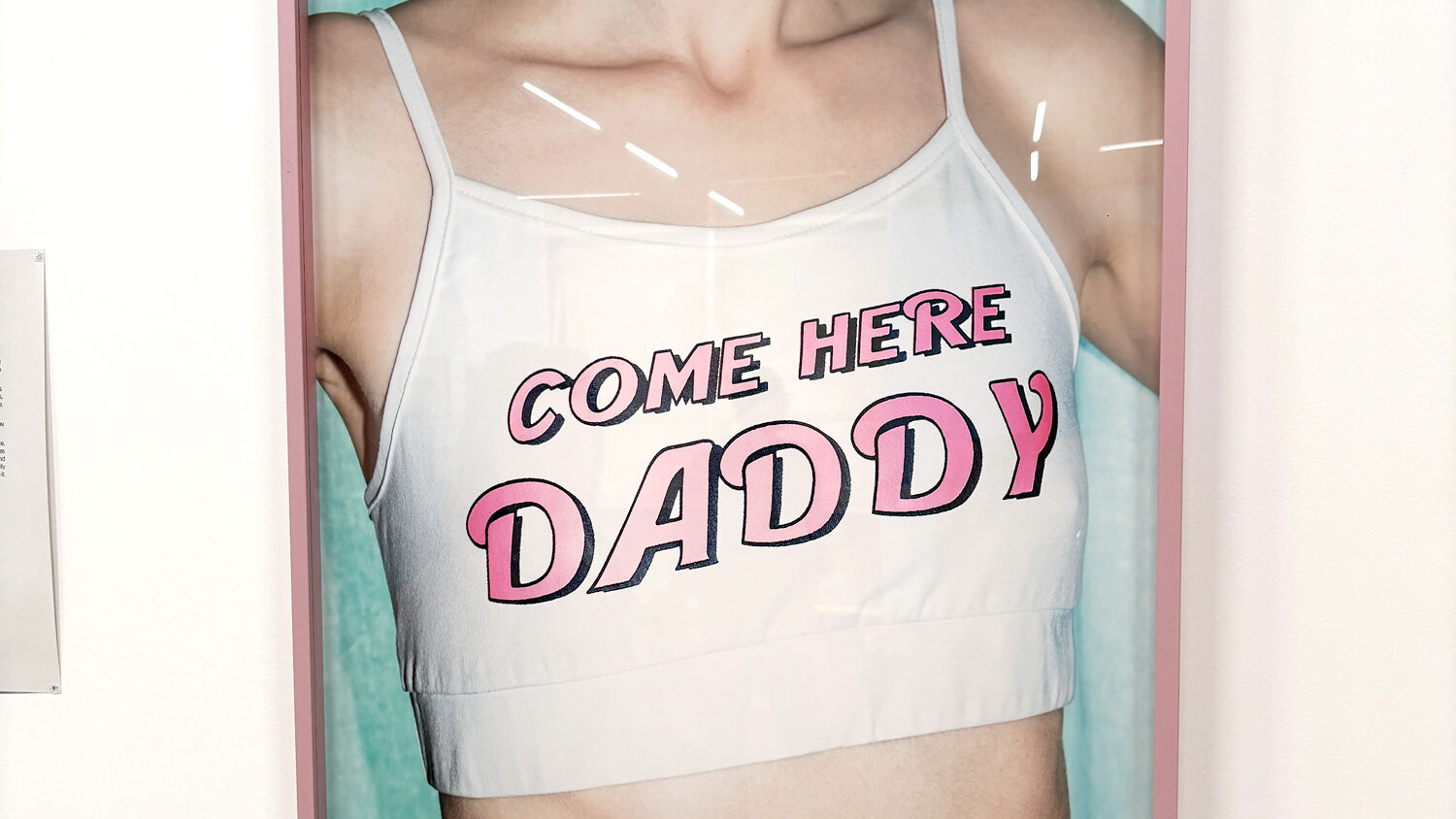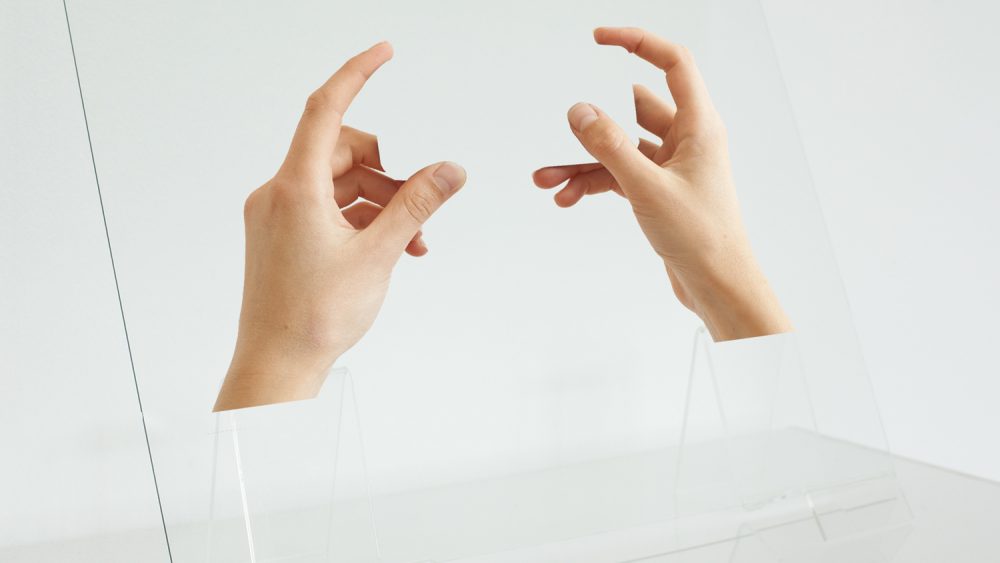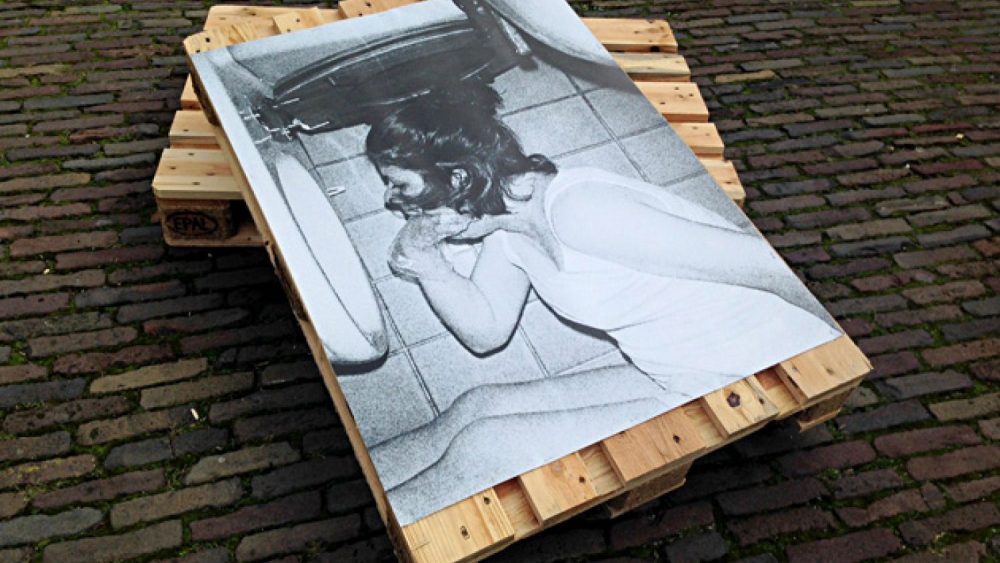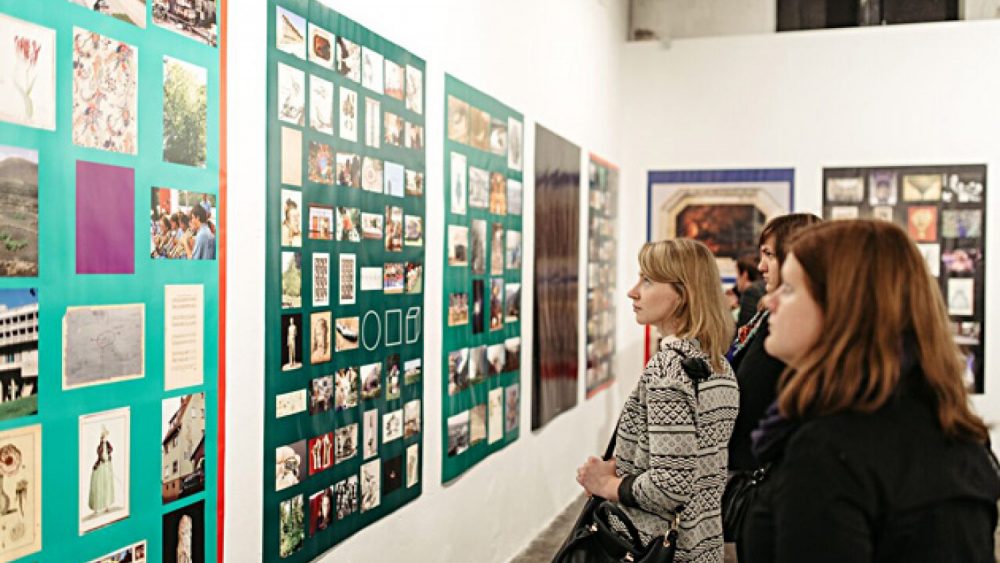Episodes from Arles ‘25
In 1888, Vincent van Gogh arrived in Arles, in the south of France, in search of light, creative freedom, and inner peace. However, the time he spent there turned out to be not only one of the most productive but also one of the most dramatic periods of his life. In Arles, he hoped to establish a creative commune as an alternative to the stressful Parisian art scene and to collaborate with Paul Gauguin, whom he had invited to join him. But the relationship between the two artists proved so volatile that it culminated in Van Gogh’s psychological breakdown and the infamous incident of the severed ear. One could say that Arles represented his hope for an ordered life and a sense of belonging – or in Lacanian terms, “the name of the father”: a symbolic structure that never materialised. Consequently, through art he attempted to impose order on his inner chaos and to compensate for the trauma of loss. Nowadays, photographers come to Arles seeking to do the same – bringing their personal traumas, family photo albums, and soothing images.
Types of Photographers
Arles is a mecca for photography. During the opening week of the annual festival, pilgrims arrive from all over the world, mostly photographers themselves, who can roughly be divided into two groups.
The first group simply wants to have a good time. They usually travel in groups, either self-organised among friends or led by a tutor from a photography school. Their days don’t usually begin until the afternoon, and their itinerary tends to look something like this: visit an exhibition, go for dinner, have a few drinks at a bar, then head to a social gathering at one of the many street parties or the square at Place du Forum. Since they’re mostly travelling as a group, they tend to feel self-sufficient in their own bubble. I’ve met some who, over the course of a whole week, have only seen a couple of exhibitions, and I’ve even come across a few who haven’t seen a single one.
The second group treats the trip as a business venture – an opportunity for networking and finding new prospects for their work. They usually travel alone. Their days start early; some are already arranging meetings with curators over breakfast to show their portfolios. Some are even willing to pay a considerable sum for a 20-minute portfolio review. They collect business cards – and hand out their own freely. They always carry their portfolio or at least a flyer or postcard they can show a curator or publisher when the opportunity arises. They may have a drink or two as well, but they never fully relax – because, for them, it’s still work.
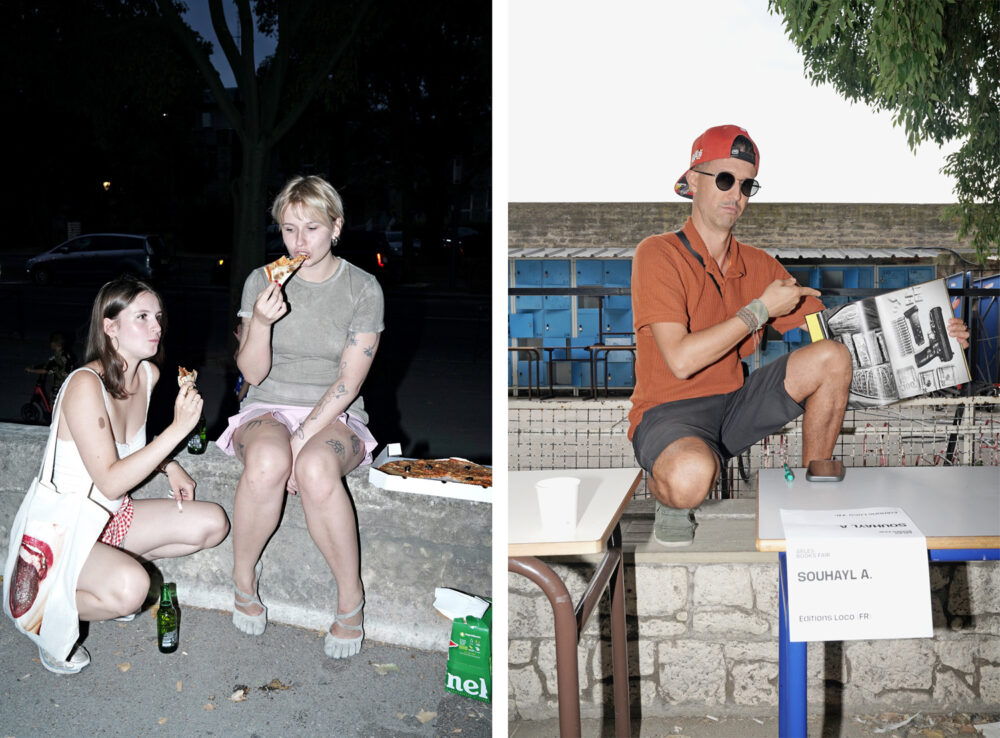
Zeitgeist Goldmines
The development of photography after the Second World War has been closely linked to the evolution of contemporary art and the political paradigms of society. Photography gradually became a critical, conceptual, and socio-politically charged instrument. In the 1950s and ’60s, so-called auteur photography dominated, primarily understood as a personal, introspective reflection on the world around us. By the 1970s, however, riding the wave of feminism, photography began to challenge gender stereotypes, modes of representation, and the power of the media. This period saw the emergence of a poststructuralist view of photography, that is, the idea of the medium as a language which does not reflect reality but constructs it.
In the 1990s, interest grew in postcolonial discourse, migration, race relations, and the politics of memory – both in art and in photography. By the late ’90s and early 2000s, photography became distinctly intimate, personal, and often political, particularly highlighting previously unseen social groups such as sexual minorities. There was a great deal of explicit nudity, justified as bodily self-representation aimed at deconstructing dominant identity norms. In recent years, the legacy of colonialism has come under renewed scrutiny with some artists reinterpreting the existing visual canon, while others, usually Indigenous artists from Africa, have been granted broader access to representation within power institutions (such as major museums).
Institutions often adapt their priorities to match the current spirit of the age, shaped by social, political, and ecological conditions. It’s clear that history is written by those with the power to write it – and for decades now, Western European art has been trying to atone for the sins of the past by giving space to those previously underrepresented, oppressed, marginalised, silenced, or overlooked. However, this policy of compensation and representation – no matter how noble its intentions – is structured from the perspective of global superpowers and disseminated worldwide, much like McDonald’s or Coca-Cola: seemingly neutral, yet enforcing a homogenised worldview. In other words, a handful of powerful nations define what counts as “Western European art” or “contemporary photography” – and that is always a story about power. When these cultural superpowers invite smaller nations to collectively atone for their colonial sins, they are in fact perpetuating the same logic of coloniality, only now through ideological imposition rather than territorial occupation. It’s a form of symbolic colonialism, in which even post-Soviet and small nations are forced to relive the guilt of other people’s histories as if it were their own.
Sometimes I wonder whether the day will ever come when this cycle has run its course and all oppressed and underrepresented members of the species Homo sapiens will have received their share of attention and reparations and maybe, finally, it will be nature’s turn. Perhaps we’ll start giving voice and power to chickens, insects, or fish. This year, my friend Sandris Mūriņš staged a performance at the Starptelpa performance festival in Riga about interspecies empathy, in which fish took control of humans.
Out of the seven projects nominated for the Discovery Award, two were about violence (one focused on violence against women, the other on violence against men), one dealt with a nuclear reactor in Slovakia, one with masculinity and the French Foreign Legion, another was a social project involving local communities in Bolivia, and two were about Indigenous people in Mexico and Peru. I made a bet with a fellow photographer that the winning project would be Heba Khalifa’s work about violence against women in Egypt – because this festival’s awards have always leaned towards politically correct gestures. Khalifa’s project ticked several key boxes in line with today’s Western institutional climate: female artist, personal story, gendered violence, the Middle East. However, the project received the Special Mention (i.e. second place), while the winner was Octavio Aguilar’s project about the Indigenous Ayuujk people in Mexico – and Aguilar himself is Ayuujk. Well, it seems the era of women’s issues and colonial legacy is over – the hot topic now is Indigenous.
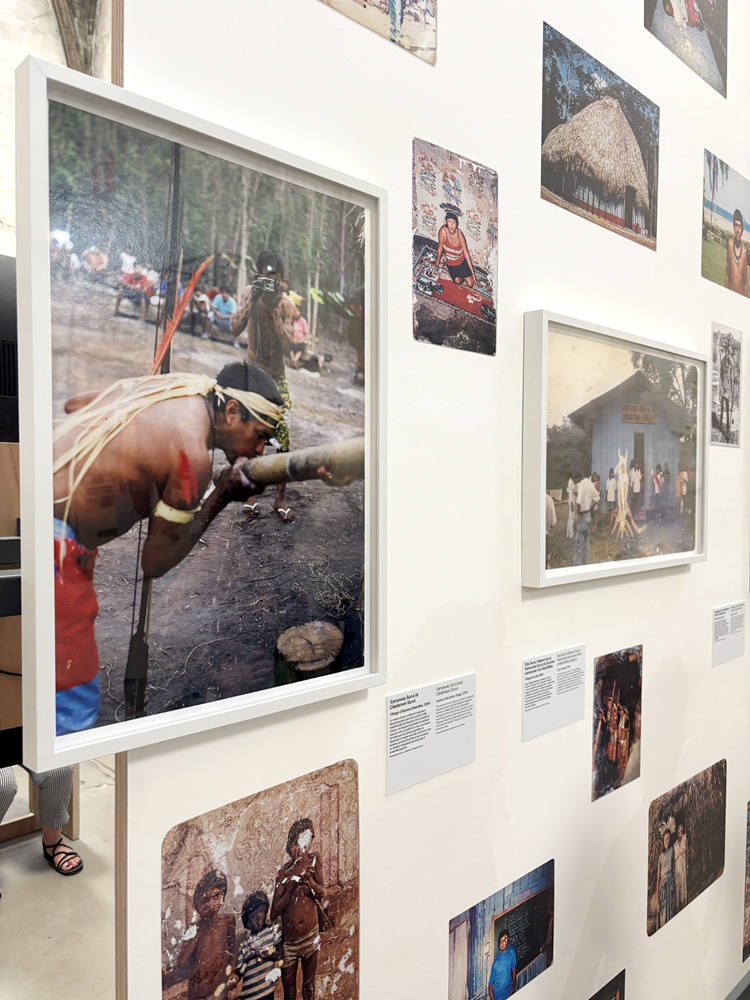
Several exhibitions in Arles were dedicated to this theme. A large exhibition by a group of Australian photographers featured only Indigenous artists, or works centred around Indigenous communities. Likewise, an equally extensive Brazilian photography show focused on Indigenous people and queer identities. The subject also appeared in several smaller solo exhibitions.
The term “Indigenous” refers to communities that have historically inhabited a given territory prior to colonisation, often maintaining unique languages, customs, and worldviews despite centuries of oppression and marginalisation. The term varies by region, for example, First Nations in Canada, Native Americans in the United States, First Peoples in Australia, but in exhibition texts, these were often used interchangeably and without consistency. Generally speaking, when colonisation is mentioned, the reference is to Africa; when Indigenous peoples are discussed, the Americas and Australia are implied. In recent years, Western institutions have increasingly sought to decolonise their narratives, and now it seems the Indigenous theme has taken centre stage, just as feminism or LGBTQ+ issues once did. It has become the new strategic goldmine of cultural policy, particularly when it comes to awarding grants, prizes, and residencies. In this context, it’s interesting to consider Latvia – we do not have a classic “Indigenous peoples problem” or a colonial past. Yet a contemporary perspective might still invite reflection on Latvians’ participation in the Duchy of Courland’s colonies in Tobago and Gambia, or on the historical assimilation of the Livonian people.
Ironically, much of Indigenous photography still visually resembles classical ethnographic approaches – people in traditional clothing, idyllic natural settings, strange rituals, thereby unintentionally repeating the same colonial perspectives it seeks to deconstruct. Sometimes I think it’s the process of deconstruction itself that now needs deconstructing.
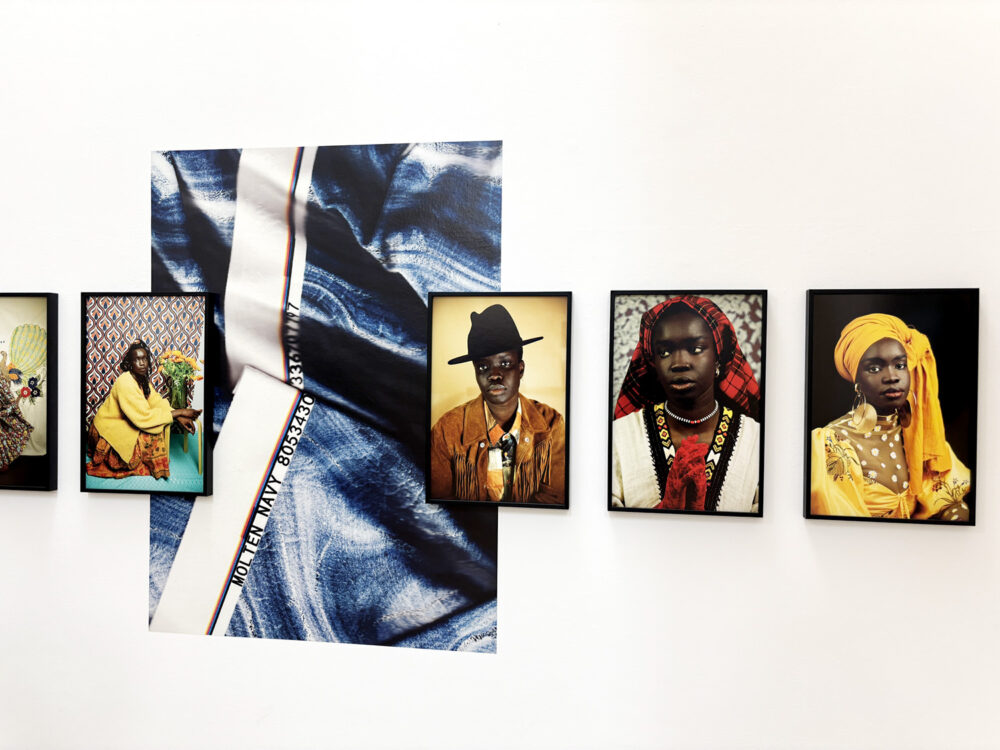
Airbnb in Arles
In Arles, I stayed in a small two-storey cottage, originally built by a retired couple for their youngest son. The house is located in their backyard, possibly a converted barn. The ground floor has a kitchen and a toilet, while upstairs is the bedroom, which still carries traces of the young man’s presence, as some of his belongings remain. From what I can gather, their son is into softball, because there’s a cap collection on the wall, a softball in a vase, some sort of trophy, and a few bits of sportswear scattered across the half-empty shelves. He’s now 21 and only occasionally stays here. The opening week of the Arles festival is a time when many locals rent out their homes to visitors, even just for a week, because demand is enormous. It’s a chance to earn money, even from a little garden shed near the old town.
One night, at around 3 a.m., I was woken by the lights suddenly turning on in my cottage, and someone beginning to climb the stairs to my bedroom. I shouted, “What the fuck is going on?” but the person kept coming. It was a young man who, upon seeing me naked in bed, wasn’t fazed at all. He simply said, “Sorry, but I need to find a shirt,” and started rummaging through the half-empty wardrobes.
“Can’t you fuck off and come back tomorrow?” I shouted at him. He replied, “Hey, could you shine your phone torch around a bit? I really need that shirt.”
“Fuck off!” I told him.
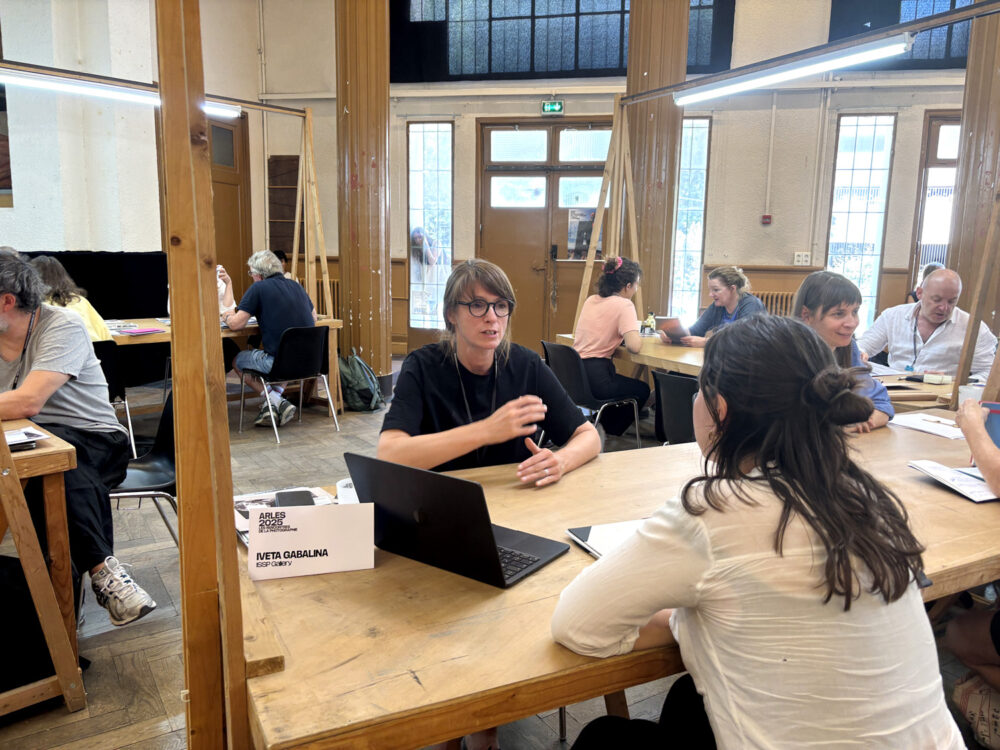
Three Wishes
Arles is the kind of place where you really feel the competition among photographers for attention. For example, they vie for slots in portfolio reviews to present their work to industry experts. Over the course of two days, I saw the portfolios of 20 photographers. Here are a few suggestions for those wanting to stand out:
- Have a clear theme. You need to be able to explain your project in a few sentences. Of course, there are projects rooted in introspective poetics without an explicit concept, but in those cases, the visual impact must be strong. These “theme-less” projects are often black-and-white, grainy street shots, nightscapes, or women’s backs. As you can imagine, this genre is oversaturated. You’ll have a better chance of standing out with an engaging topic. To clarify your theme, ask yourself: What is my project about? What is the argument or issue I’m raising? Why is this important to me? Choose themes close to your heart. The personal matters. It’s fairly pointless for, say, a Latvian photographer to do a photo series about India and then try to pitch it to a festival in France. There are exceptions – if the theme is unique or timely due to current events, but otherwise, start with what genuinely moves you.
- Select five key images that best represent your project – think of them as keywords for your theme. Try to arrange them in a deliberate order, as this will create a sense of narrative, even if your series lacks a linear story. Group images based on content and intuition, rather than formal criteria. These five will form the backbone of your series, around which the rest can be built.
- Be bold – both in making your work and promoting it. Send your portfolio to curators and editors, attend portfolio reviews. This isn’t just about feedback or self-promotion – it’s about networking. Personal connections matter and can open new doors.
Lesser Priorities
From what I saw in the portfolio reviews and exhibitions, this year’s festival leaned heavily into escapist photography – nature, dreaminess, inner trauma. One day at the reviews, three out of ten photographers showed me projects involving flowers. I didn’t see a single exhibition addressing the war in Ukraine, the genocide in Gaza, Trump’s “new world,” or the trauma of post-pandemic youth. One exception was a show by Luxembourgish artist Carine Krecke – a four-channel video installation about the war in Syria, using Google Maps imagery as its foundation. Palestine briefly appeared during Nan Goldin’s talk in the Arles amphitheatre. After projecting her work, she asked for silence while showing a roughly ten-minute kaleidoscopic video composed of footage taken by civilians in Gaza. At the end, she stated that what’s happening in Gaza is genocide. A woman in the audience immediately shouted that Goldin was wrong, prompting others to chant “Free Palestine!” The situation in Gaza was also highlighted in street posters showing Israeli Prime Minister Netanyahu as a wanted war criminal, and in one of the most visible street art pieces in Arles: No Photo double posters – one featuring a large black rectangle, the other a caption describing what could have been in that black space: a summarised account of Gaza’s horrors. There was, however, not a single mention of Ukraine. When I met Ukrainian curator and photo-world activist Kateryna Radchenko in Arles, she confirmed it: Ukraine was yesterday’s news. Massive interest only during the first year, now Ukrainians are back on the periphery. So it turns out that neither geopolitical catastrophes nor even climate change were priorities in the Arles festival programme, not even in the satellite events. These topics had to be sought out quite literally in the streets, as guerrilla art interventions.
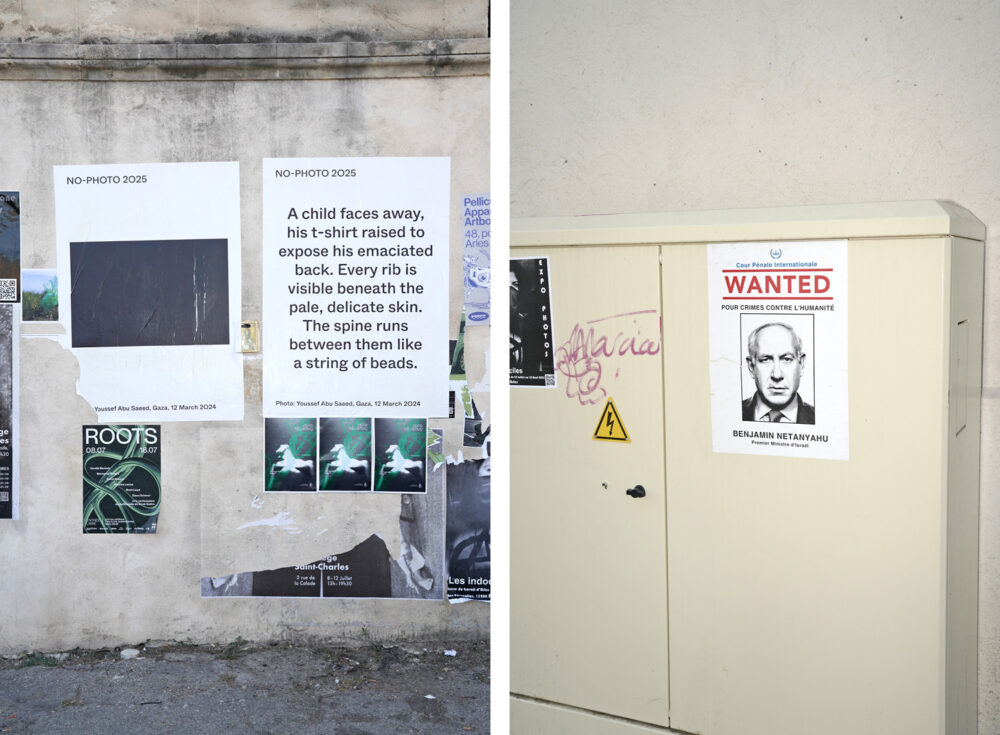
Why is photography so escapist this year? The wars in Ukraine and Gaza, Trump’s stormy comeback, the spectres of right-wing populism in Europe, ecological crises, post-pandemic aftershocks, and the challenges artificial intelligence poses to our understanding of reality – all these things are making the collective psyche feel uneasy and unsafe. In such conditions, photography, a medium whose strength lies in its ability to document and act politically, is now serving more as a means to disconnect from a dreadful everyday reality. No longer is photography expected to deliver truth or revelation, but rather aesthetic comfort, dreams, healing. The more miserable the circumstances we live in, the more we long to forget them through art. In other words, we’re living in the era of musicals, comedies, and sentimental schlager songs.
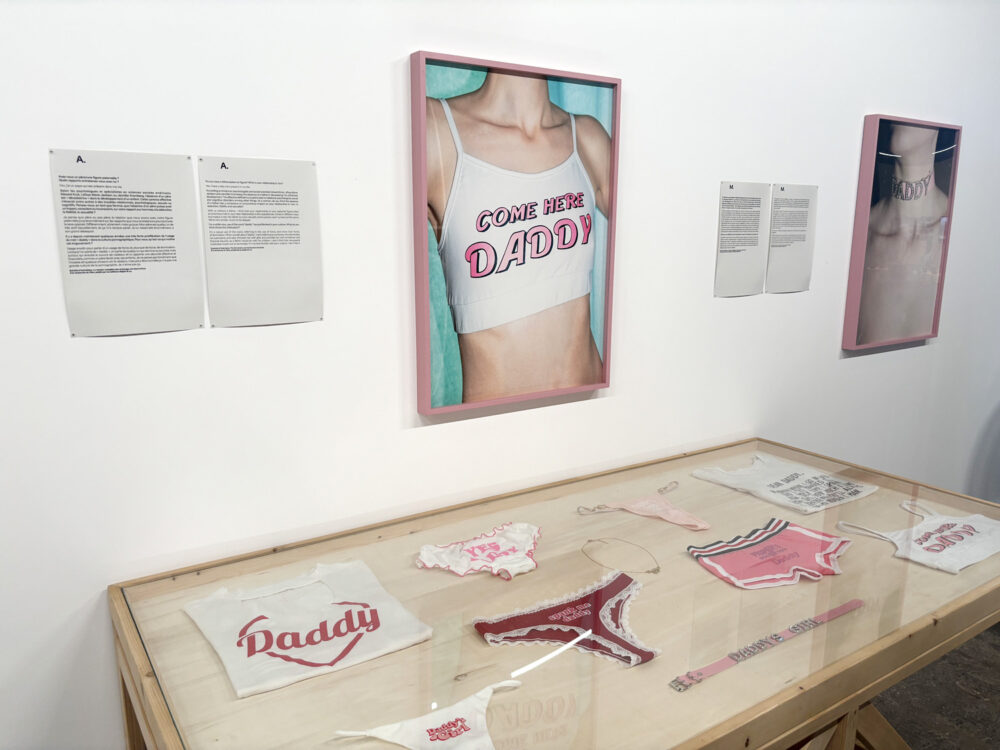
Talking with other photographers and curators, we agreed that this is the year of lost fathers, as many artists have chosen to focus on that theme. Nearly all of them draw on family archives – images, letters, notes, objects, while others construct new archives that resemble reconstructions of evidence that never existed. One major solo exhibition features Diana Markosian, whose father disappeared in Russia after she emigrated to the US, and whose mother cut him out of every family photograph. The book dummy competition was won by Nata Drachinskaya, whose father, a former KGB officer, committed suicide in 2001. Jean Michel André’s father was shot dead in a hotel during a family holiday. Meanwhile, Camille Lévêque presents an encyclopaedic view of different father figures – from dictators to sexual fetishes. Earlier this year in Riga, at gallery Look, Sabīne Zoltnere also exhibited a project about the loss of her father, which we recently published in FK. It’s quite possible that Van Gogh, too, spent his whole life searching for a “father” – an authority, a source of stability, something he lacked both literally and symbolically. His own father, with whom he had a very strained relationship, died shortly before Vincent began seriously pursuing art. Some sources suggest this loss laid the groundwork for his mental health issues.
Since the 1970s, when feminism, post-Freudian psychoanalysis and poststructuralism entered the art world, Western art has been consistently engaged in deconstructing patriarchy and traditional power structures. But over time, this has also resulted in the loss of the symbolic father – not just in the family, but in culture as a whole. Freud and Lacan would say that this focus on the lost father is a projection of unconscious anxiety, emerging when the symbolic framework – traditionally upheld by the father as an authority figure – begins to collapse. One might argue that this kind of photography symbolises the crisis of Western society. As patriarchal structures are dismantled, society struggles to maintain a stable identity or imagine future visions. Feminists might object to turning the father figure into a metaphor for social collapse, but the flowers, sunsets, idyllic landscapes, dreamy portraits and archival collages suggest that the loss of the father is often aestheticised as a form of personal melancholy. So even within the context of feminist critique, the father figure continues to appear as a visualisation of symbolic collapse. Some artists address this trauma of loss directly with photo projects about fathers. Others veer into spiritual esotericism, offering visual anaesthetics for the times we live in rather than socially engaged tools. Poststructuralists might argue that escapist photography can still be a form of resistance, therapy, or even a political gesture. Who knows, maybe dreaming rather than punching someone in the face is the new form of protest. Slavoj Žižek would likely sneer at this, saying such photography merely helps Western society sleepwalk further into inaction, doing nothing to prevent its own demise – because, fundamentally, everything’s fucked up.
Let’s Go Mushroom Picking
For €1.20, you can take a bus from Arles to the sea. The final stop is a small, charming historic town called Saintes-Maries-de-la-Mer, next to the vast Camargue Nature Park – salt marshes on one side, white dunes in the middle, and a quiet coastline with few tourists and cool waters. There are said to be wild horses, bulls, and flamingos here, though so far, I’ve only seen tourist groups on horseback, led by guides. Their routes can easily be tracked by lines of horse droppings. Looking toward the dunes, the landscape feels like a desert. In the early 20th century, the Camargue became Europe’s own “Wild West”, where Folco de Baroncelli made silent film westerns in the American style. An entire exhibition about this little-known phenomenon was held at the Arles festival nine years ago.
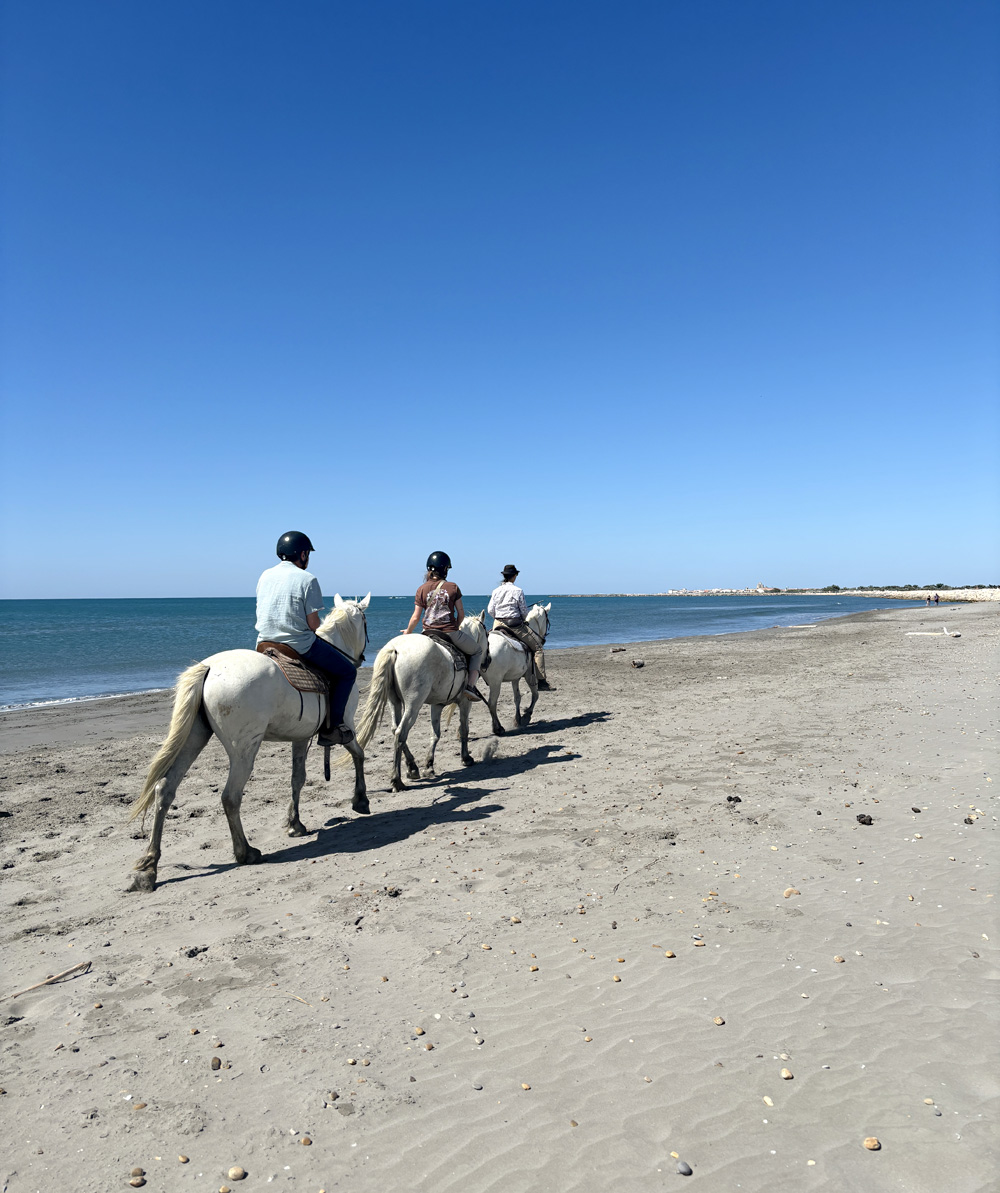
Sitting on the beach, I read a New Yorker article by Michael Pollan about a psilocybin experiment conducted with religious leaders from various faiths. Psilocybin is a natural psychedelic compound found in magic mushrooms that alters perception, mood, and cognition. For centuries, it has been used in spiritual and healing rituals, and today it’s being researched for its potential to treat depression, anxiety, and PTSD. In this study, researchers wanted to see whether mushrooms could help people meet God. Participants included leaders from Catholicism, Islam, Baptist churches, Buddhism, and several rabbis – none of whom had previous experience with psychedelics. Their journeys varied: one described it as a shortcut to God, another felt divine grace, someone else encountered emptiness or nothingness. But the main takeaway was this: mushrooms provide the chance to experience the divine without an institution. For some, that divine presence resembled a kind of spiritual orgasm – rooted in sensation and emotion, not religious imagery or symbolism. For others, it was a revelation about themselves, their place in the world, or the order of existence itself. In short, a glimpse of the truly essential – the human foundation hidden beneath our daily systems of capitalism, neo-feudalism, bureaucracy, or what Lacan might call “the name of the father”. One researcher, somewhat offhandedly, remarked in the article that mushrooms had made him rethink everything he was doing in the context of science, but he wasn’t ready to talk about it publicly, as it would challenge his entire field. What did he mean by that, I wonder? Perhaps the deconstruction of humanity itself? Or the idea that the advancement of civilisation and science along with it, is driven more by laziness and fear of death than by a true pursuit of truth? In this context, I began to wonder what would happen if photographers en masse took mushrooms. Would we see even more dreamlike landscapes and flower series? Or would some become radical prophets of apocalypse? Maybe it’s possible to dream so deeply that you arrive at enlightenment.
